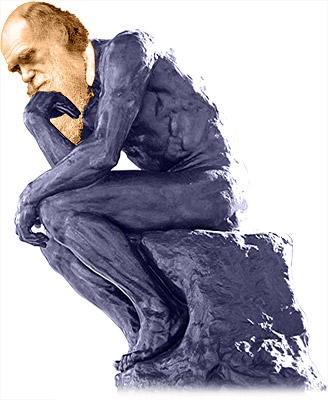|
About the speakers
Roy Caldwell is a professor in the Department of Integrative Biology. For more than 40 years he has prowled coral reefs from Bermuda and Panama to Australia and Indonesia. While most of his research has been on the behavior and ecology of stomatopods and octopus, he and his students also have worked on coral reef conservation and restoration and even participated in the discovery of a new species of living coelacanth from Indonesia.
Nicole King is an Assistant Professor of Genetics, Genomics, and Development in the Department of Molecular and Cell Biology. She received her Ph.D. from Harvard University in 1999, performed a post-doc at the University of Wisconsin from 2000-2003, and then joined the faculty at UC Berkeley. Her research focuses on animal origins, genome evolution, and the biology of choanoflagellates, the closest living relatives of animals.
Han Lim is an Assistant Professor in the Department of Integrative Biology at UC Berkeley. He received his medical degree from the University of Queensland in Australia and has a Ph.D. from the Department of Pediatrics, University of Cambridge. He was a post-doctoral fellow at MIT in the Department of Physics before joining the faculty at UC Berkeley in 2005. His current research explores the intersection of genetic, epigenetic and environmental factors in pathways that control bacterial cell differentiation to better understand bacterial pathogenesis and to provide tools for the rational construction of synthetic circuits and genomes.
Charles R. Marshall arrived in 2010 to become a Professor in Integrative Biology and the Director of the University of California Museum of Paleontology. A native Australian, Prof. Marshall did his Ph.D. at the University of Chicago and an NIH post-doc in evo-devo at Indiana University before serving eight years at UCLA and ten years as a Professor of Biology and Geology at Harvard University. He has very broad interests, including quantifying the incompleteness of the fossil record and integrating molecular phylogenetic and paleontological data in evolutionary studies.
Kevin Padian has been a professor of evolutionary biology and paleontology at Berkeley since 1980. He is interested in how big changes get started in evolution, and in the history of thought about biology and evolution. A lot of his focus is on the age of dinosaurs and how dinosaurs evolved into birds. He is also the long-time President of the National Center for Science Education, the pre-eminent organization that explains the creationism vs. science issue to the public. In 2005 he was an expert witness in the Dover, Pennsylvania, "Intelligent Design" trial.
Nipam H. Patel is a Professor of Molecular & Cell Biology and Integrative Biology. He was an undergraduate at Princeton, a graduate student at Stanford, a staff associate at the Carnegie Institution, and a Professor at the University of Chicago before arriving at UC Berkeley. His research focuses on the developmental changes that underlie the diversification of animals. He is also the co-author of a college level textbook on evolution published by Cold Spring Harbor Press, and is active in educating the public on evolutionary biology.
Eugenie C. Scott is the Executive Director of the National Center for Science Education, Inc., in Oakland, CA. She is widely recognized as being an expert on the creationism/evolution controversy, and is the author of Evolution vs. Creationism: An Introduction, and with Glenn Branch, Not in our Classrooms: Why Intelligent Design Is Wrong for Our Schools. For her work at NCSE she has been awarded the National Academy of Sciences Public Welfare Medal and honorary degrees from eight institutions, and received NABT's Honorary Membership, its highest honor.
Gale M. Sinatra, (Ph.D., Psychology, University of Massachusetts, Amherst) is a Professor of Educational Psychology at the University of Nevada, Las Vegas; Editor of the APA's Division 15 journal, Educational Psychologist; a Fellow of APA and AERA; and Vice President of AERA's Division C, Learning and Instruction. Her model of conceptual change learning emphasizes the role of motivation in conceptual change. Along with her colleagues, Sarah Brem (ASU) and Margaret Evans (University of Michigan), she is currently co-PI on a National Science Foundation grant exploring the challenges of teaching and learning about biological evolution in the U.S., which include emotional and motivational barriers.
David Weisblat is Professor of Cell & Developmental Biology in the Department of Molecular & Cell Biology at Berkeley. After undergraduate and graduate work at Harvard and Caltech, he came to Berkeley to study the leech nervous system with the late Gunther Stent, but got diverted into studying its embryo. After 34 years on this sidetrack, he feels he is just getting started. He also teaches internationally with the IBRO Visiting Lecture Team Program, and directs an NSF REU program in Cell, Developmental and Evolutionary Biology.
Adrienne Zihlman is Professor of Anthropology at UC Santa Cruz with research interests in primate and human evolution. Her publications cover topics on the evolution of human locomotion, chimpanzee and gorilla anatomy, growth and development of apes and fossil humans, and the role of women in evolution. She is co-editor of The Evolving Female: A Life History Perspective and author of The Human Evolution Coloring Book and of a book on comparative ape anatomy (in progress). She is Science Trustee of the California Academy of Sciences. |
